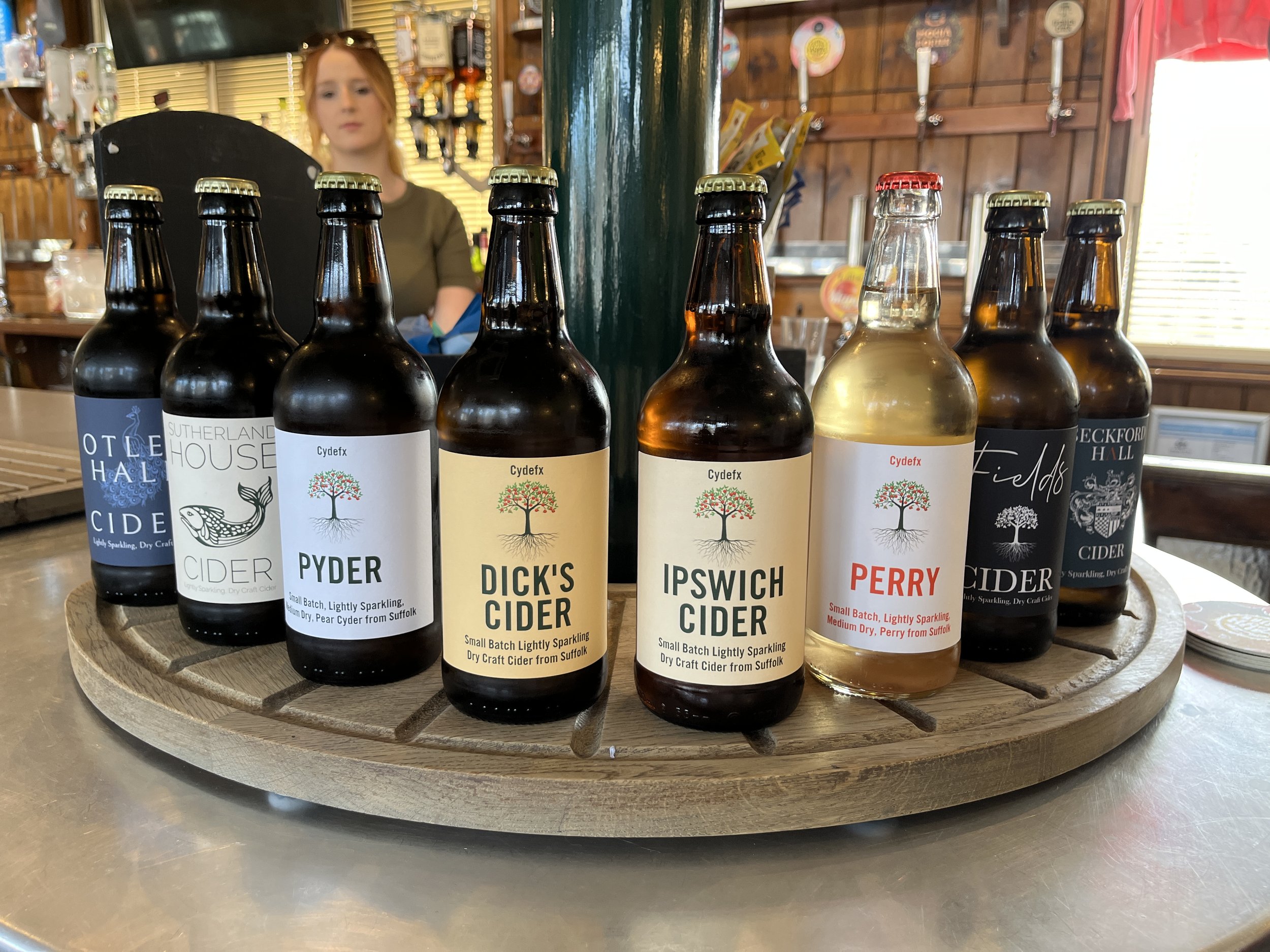Craft (or Real) Cyder is a natural apple fermentation product. CAMRA (CAMpaign for Real Ale) has a definition for real cyder:
“Real Cider or Perry is fermented from the whole juice of fresh pressed apples or pears, without the use of concentrated or chaptalised juices”.
This statement means that pretty much any cyder you buy from a supermarket is not a real cyder and could be considered as ultra-processed food.
We make cyder because we care. We care about the apples that we grow, the trees they come from and the soil the trees grow in. If we take apples from others these are only within a small radius of Ipswich, thereby minimising food miles. We also believe strongly in the method of cyder production that makes it as natural as possible. We don’t add any preservatives, artificial sugars or water to the juice that is pressed, and we only add the bare minimum of natural agents to ensure a successful fermentation and to give a light fizz, we don’t pasteurise the cyder either as the fermentation converts all the sugars into alcohol which will mature over time in the bottle.
In keeping with our community focus and environmental ethos we also reuse standard (short) amber bottles and donate the dried pomace (fruit pulp) to a local community interest smallholding to feed their livestock. The pomace is a by-product from cider making, and the livestock is not intended for human consumption.
For most people, cyder production is a black art. In reality it’s quite straightforward but it takes a lot of time. Juice is pressed from apples and left to ferment. Any sugar in the juice is converted to alcohol by either the natural yeasts present in the juice or any commercial apple yeast that is added at this stage. After extracting the juice from the fermentation products (dead yeast cells, sediments, etc.) the cyder is then bottled. We condition our cyder in the bottle, which means that with a tiny addition of sugar at the bottling stage any yeasts that remain can work in the bottle to produce carbon dioxide gas that gives it a lightly sparkling finish.
Cyder can be made from any apples, including crab apples. If you drink cyder from the West Country your cyder is most likely made from cider apple varieties. In the East Counties it is more likely that the apples are a mix of culinary and dessert apples. Each variety will have an impact on both the fermentation process and the resultant flavour and finish. Our cyder started with Bramley’s Seedling apples to which we have added all sorts of local varieties. We are also fortunate to have a cyder made from cider varieties.
Cydefx cyders and perrys are all unfiltered, unpasteurised, vegan friendly, gluten free, have no added sulphites post-fermentation and contain no known allergens.
What our cyder is not: It’s not mass produced, watered down (whether it’s water, syrup or juice, we don’t do it), processed (evaporated or condensed), never from concentrate, or pasteurised. We believe that cyders produced like this are not cyder at all. It doesn’t contain any added sugar (except for a tiny amount added to the bottle for conditioning) or preservatives, or the devil's dandruff (artificial sweeteners). Our cyder is not a “supermarket” cyder so it won’t be found all year round on the shelves, it’s a seasonal product.
How to enjoy our cyder: It really must be from a cold fridge, chilling the cyder makes it a refreshing beverage, emphasises the light fizz and allows for the appreciation of its dryness. Bottles should be opened and poured carefully to ensure that any sediment, that may have settled in the bottom, is left behind (leave at least a centimetre in the bottle to be sure), but it’s not harmful and can be consumed if you prefer it that way.
Why is there sediment? Bottle conditioning puts the cyder through a further fermentation. If there are any yeast cells left behind after turning all the sugars to alcohol these will drop out and settle as sediment.
Cyder or Cider? These different spellings have been in use for hundreds of years and were often used interchangeably by the same person to mean the same thing. However, there is a common belief that Cyder (with a Y) was once used to define a craft product, to differentiate it from a mass produced Cider (with an I). Cyder was used for the first pressing of the fruit, using all and just the juice obtained, it is often matured in the cask or bottle. Cider on the other hand was once a drink obtained from diluting the juice or putting water through a re-pressing of pulp. Today, the difference is just in the marketing of product. We chose our name “Cydefx” to mark the craft heritage of what we do, although we also use “Cider” to describe some of our products - this is only a marketing decision, not any reference to the quality of our product.


